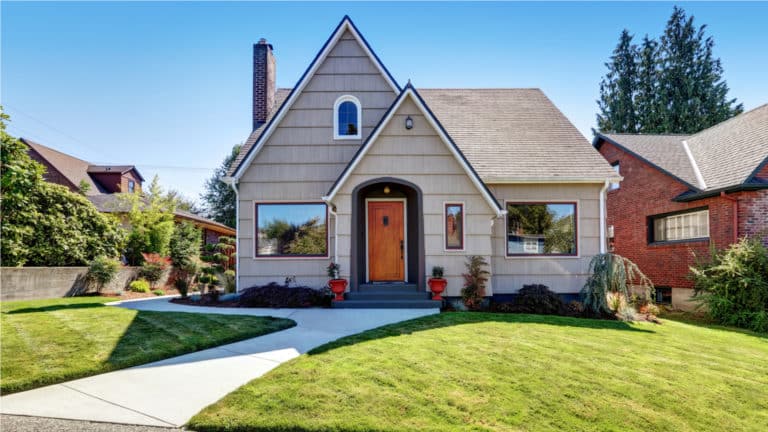If you’ve ever applied for a mortgage loan before, you may have been surprised to find almost as many different types of mortgages as there are homebuyers. Or maybe you realized how complex it can be and leaned on a trusted advisor to guide you through it.
Either way, knowing the loan options available to you enables you to choose a loan that best fits your needs. This is true whether you’re an experienced property owner or a first-time buyer who’s trying to figure out if homeownership is right for you.
So let’s take a look at the major types and categories of mortgage loans. We’ll walk through the differences between each one, along with examples of the types of borrowers they may be right for so you can determine which mortgage loan type is right for you.
Just how many different types of mortgage loans are there?
Short answer – a lot. If you google mortgage loan types you’ll find some articles defining 13 or more mortgage types. But why did banks make up so many different types in the first place?
No two borrowers or properties are alike. This means that each loan carries a unique amount of risk. Lenders have created multiple mortgage types to meet the needs of the market, while mitigating their risks. Because of this, some loans follow specified underwriting guidelines and others don’t – creating the wide array of options available.
Before we get there, let’s start by looking at four major types of loans: fixed-rate mortgages, adjustable-rate mortgages, government-backed mortgages, and jumbo mortgages. We’ll take a closer look at these mortgage types and how lenders think about borrowers to help you gain a clear understanding of which loans may be right for you.
Fixed-rate mortgages
This is often what people think of first when they think of mortgage loans. It’s a mortgage with an interest rate that never changes throughout the life of the loan. Most fixed-rate mortgages have 30-year and 15-year repayment terms.
Generally speaking – the shorter your repayment terms, the lower your interest rate will be. So a 15-year mortgage will have a lower interest rate than a 30-year loan. However, spreading the repayment out over twice as much time means 30-year loans usually have lower monthly payments.
Fixed-rate mortgages at a glance:
- Interest rate is fixed for the life of the loan
- Usually requires credit scores of 620 or higher
- Down payments range from 3-20%
Best for:
- 30-year: Homebuyers who want a predictable, lower monthly payment amount.
- 15-year: Homebuyers and refinancers who want to pay less interest overall, build equity faster, or pay off the loan sooner – with a predictable payment amount.
Adjustable-rate mortgages
Adjustable-rate mortgage (ARM) loans are characterized by lower initial interest rates for a specified amount of time also known as the “fixed period.” Fixed periods often last 1, 5, 7, or 10 years. After the initial fixed period, the interest rate is reassessed and adjusted throughout the loan on a specified interval.
You may see these loans written out as “initial period/reassessment interval.” For example, an ARM with a locked-in rate for the first five years that is reassessed every single year after that would be written as a “5/1 ARM.” Meanwhile, an ARM with a seven-year fixed period that is reassessed every six months thereafter is known as a “7/6 ARM.”
Adjustable-rate mortgages at a glance:
- Often has a lower initial rate than fixed-rate mortgages
- Interest rate adjusts at regular intervals to reflect the current market rates
- Homebuyers risk paying more over the life of the loan than a
fixed-rate mortgage
Best for: Homebuyers who don’t intend to own the property longer than
the fixed period or who expect interest rates to decline in the future.
Related read: The ABC’s of ARMs: How Adjustable-Rate Mortgages Work
Government-backed mortgages
These types of mortgage loans are intended to encourage and support homeownership among groups who fit certain criteria, such as veterans or buyers with lower credit scores.
These loans are insured by specific government agencies and often require less initial money down (or even no money down). They may even offer better fixed interest rates than other types of loans.
However, borrowers must meet specific terms set by the backing agency to be eligible. Criteria is often based on experience, location, credit score, income levels or property value.
The most common government-backed loan types are FHA loans, VA loans and USDA loans; they are backed by the Federal Housing Administration, Veterans Affairs and U.S. Department of Agriculture, respectively.
FHA loans at a glance:
- Credit scores as low as 500
- Down payments as low as 3.5%
- Requires mortgage insurance for the life of the loan
Best for: Homebuyers who have lower credit scores or are not able to make
a 20% down payment.
__________
VA loans at a glance:
- Available to military service members and veterans
- Requires no down payment and no mortgage insurance
- Require a VA funding fee based on the value of the property
Best for: Qualified military homebuyers looking for lower interest rates or
mortgage loans with no down payment.
__________
USDA loans at a glance:
- Have restrictions on location
- Have income and property value caps
- Require no down payment
- Available for home improvement loans as well
Best for: Qualified homebuyers in applicable areas who need a loan without
a down payment.
Related read: What is an FHA Loan? Everything You Need to Know
Jumbo mortgages
These loans are almost certainly what you think they are – mortgage loans for high-value properties. Jumbo mortgages are used when the loan amount exceeds the limits set by the Federal Housing Finance Agency (FHFA). In 2022, the conforming loan limit is $647,200 for most areas of the U.S.
These loans carry more risk for lenders because they are not protected against loss and cannot be guaranteed by Fannie Mae and Freddie Mac. As such, jumbo mortgages have stricter qualifying criteria. These loans can be either fixed-rate or adjustable-rate.
Jumbo mortgages at a glance:
- Requires a credit score of 700 or higher (sometimes 720 or higher)
- Debt-to-income (DTI) ratio is capped ~45%
- Down payments are often 20% or more, though some lenders will
go as low as 10% for the right buyer
Best for: Homebuyers or refinancers who are looking at more
expensive homes.
Related read: What is a Jumbo Mortgage? Everything You Need to Know
Other mortgage terms you’ve likely heard
While those are some of the more common mortgage loan types you’re likely to come across, that list is far from exhaustive. But understanding the different loan types are only part of what you should know about mortgages.
If you’ve already been looking into mortgage loans you may have heard some other terms as well: conventional, conforming and nonconforming. While each of these can apply to multiple of the mortgage types above, they help define specifics about the loan they’re used with.
Conventional loans
Broadly speaking, these are fixed-rate or adjustable-rate loans that are not backed by the government. This affords homebuyers several specific benefits:
- Can be used for primary residences, vacation homes or even investment properties
- Usually do not require mortgage insurance once you reach 20% equity
- Sellers can contribute some or all of closing costs
By contrast, most government-backed loans can only be used for your primary residence and, if it’s required, the mortgage insurance must be carried for the life of the loan.
And while you won’t have to worry about government qualifications, without that federal backing, banks will typically be more strict on borrower requirements. Expect requirements like:
- A credit score of 620 or better
- DTI ratio of 43% or lower
- Possible higher down payments than government-backed loans
- Significant documentation to prove your repayment ability
Conventional mortgage loans are also split into two subcategories – conforming and nonconforming – each of which helps further determine the structure and requirements of the loan.
Conforming vs. nonconforming mortgage loans
Conforming mortgages are simply loans that meet specific criteria. These are:
- Property is valued under the amount set by the FHFA
- Adhere to the underwriting terms set by Fannie Mae and Freddie Mac
Fannie Mae and Freddie Mac are Government Sponsored Enterprises (GSEs) that are implicitly backed by the federal government. They buy conforming loans, bundle the loans into mortgage-backed securities, and sell these securities to private investors. Conforming loans are popular with lenders because they know they will typically be able to sell them and free up their lending capital.
Nonconforming mortgage loans do not meet these guidelines and are therefore a higher risk loan. Nonconforming loans include:
- Jumbo loans
- Loans made to borrowers with a combination of low credit scores, lower or no down payments*, and higher DTI ratios
Because nonconforming loans are higher risk, lenders usually charge both higher fees and interest rates for them. In this case, a homebuyer may be better served by looking into one of the government-backed options.
* A low down payment on it’s own does not necessarily make a loan nonconforming. Both Fannie Mae’s HomeReady and Freddie Mac’s Home Possible programs allow for down payments as low as 3%. They will both require mortgage payment insurance and operate similarly to FHA mortgages.
A mortgage loan to fit nearly everyone’s needs
Both lenders and the U.S. government have realized that a one-size-fits-all approach won’t work with mortgage loans. In order to meet the broad range of needs potential homebuyers have, they’ve developed the common loan types we’ve discussed above, as well as several not covered here.
It’s incredibly important to evaluate your options before choosing a mortgage loan. To learn more, check out our guides on ARMs, FHA loans and even our beginners’ guide to mortgages.
Ready to take the next step? Check out today’s rates to help you determine which type of loan is right for you.







